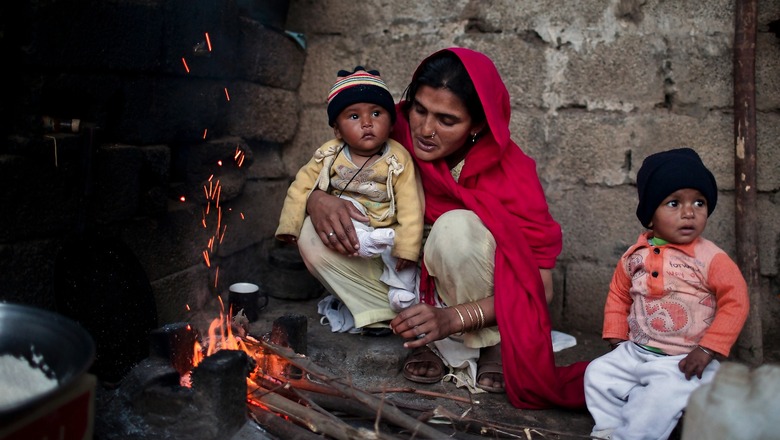
views
New Delhi: Even as India is dissuading its women from burning firewood and dung, nearly three billion people, including women and children, breathe in dirty air from stoves and household fuels across the world, a study reveals.
According to a worldwide data from the World Health Organisation, 40 percent of the world’s population is affected due to household air pollution.
WHO Director-General Dr Tedros Adhanom Ghebreyesus said in a statement that not only do seven million people die globally from outdoor and indoor air pollution every year but nine out of ten people breathe in air containing dangerously high levels of pollutants.
The WHO made public data it had gathered to update its global database on ambient, i.e. outdoor air pollution, and on indoor air pollution. The data comes from 4,300 cities from 108 countries.
Major sources of ambient air pollution from particulate matter include the inefficient use of energy by households, industry, the agriculture and transport sectors, and coal-fired power plants. Deaths occur from ‘exposure to fine particles in polluted air that penetrate deep into the lungs and cardiovascular system, causing diseases including stroke, heart disease, lung cancer, chronic obstructive pulmonary diseases and respiratory infections, including pneumonia’.
With nearly 10 crore Indian households still deprived of LPG as cooking fuel, the families mostly have to rely on firewood, coal and dung cakes as primary source of cooking. Considering the adverse effects of household smoke, the prime minister introduced Pradhan Mantri Ujjwala Yojana last year under which 50 million LPG connections were to be given to women belonging to families that fall below the poverty line (BPL).
However, the WHO data reveals that it is not only India which is battling household air pollution, but it’s a worldwide problem, leading to serious health issues.
In 2016, 4.2 million of these deaths resulted from outdoor air pollution and the remaining 3.8 million from indoor air pollution caused by polluting fuels used often for cooking.
A chunk of the deaths -- 90 percent -- took place in low to middle income countries across Asia, Africa, and then the eastern Mediterranean region, Europe and the Americas.
Household air pollution too disproportionately affected south-east Asia, with 1.5 million deaths in the region.
Deaths apart, air pollution is a critical risk factor for non-communicable diseases (NCDs), causing an estimated 24 percent of all adult deaths from heart disease, 25 percent from stroke, 43 percent from chronic obstructive pulmonary disease and 29 percent from lung cancer, said the WHO.
The ambient air pollution database covers 4000 human settlements ranging in size from a less than a one hundred to more than 10 million inhabitant, and shows that the burden of disease has gone up from 3 million deaths in 2012. It also showed that 51 percent of the 4.2 million deaths were of men aged 15 years and above, 42 percent were women aged 15 years and above and six percent were children below the age of five.
The data on household air pollution showed that 46 percent of the deaths were of men aged 15 years and above, 42 percent were women and 11 percent were children under the age of five.




















Comments
0 comment